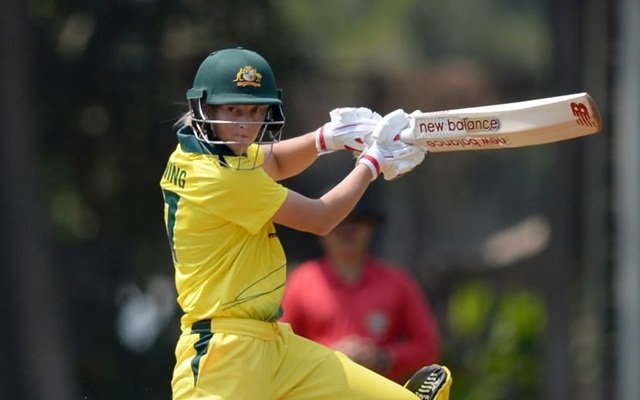Peerless Lanning leading from the front help Australia into Semis: ICC Cricket
Whenever you are 121 for no misfortune inside 19 overs pursuing 278, the quest for the most noteworthy fruitful pursue in an ODI World Cup doesn’t feel excessively overwhelming. At the point when you are Australia, undefeated and title top choices with an unequaled batting profundity, it’s practically unavoidable, a question of when, not if.
Typically, notwithstanding pockets of battle from India, that is the way the last 30-odd overs of the match worked out at Eden Park. Obviously, it was Alyssa Healy and the in-structure Rachael Haynes, who set the vibe of the pursuit before top-scorer Meg Lanning and the center request assisted wrap up the six-wicket with winning. It was the seventeenth fruitful pursue in succession for Australia in the organization, the joint-longest series of wins alongside the India men’s group in 2005-2006.
With that, Australia entered the knockouts of this version of the World Cup with a fifth success on the skip. India, sprinters up in the 2017 World Cup, when they took Australia out in the semi-finals, presently face two must-dominate matches to clutch any expectations of completing in the best four. Half-hundreds of years from Mithali Raj, Yastika Bhatia and Harmanpreet Kaur, the main occasion of India’s Nos. 3, 4, and 5 making fifties in a World Cup match, demonstrated runs were available for whoever gets there first on the Eden Park belter. Yet, the application and desperation Australia’s openers, Healy and Haynes, and later Lanning displayed in answer to India’s 277 for 7 would have been above and beyond.
Healy and Haynes rebuffed anything wide or rebellious, running hard between the wickets in any event, when the progression of fours stayed speedy and consistent. Altogether, they squeezed 33 singles, seven twos, four threes, and struck 14 fours in their century stand as Healy played the assailant with her 65-ball 72, equalling her most elevated score of this World Cup. It didn’t assist that India’s assault showed little flexibility with their lengths or lines, with Australia dashing to 69 in the powerplay. That India were one bowler short – Deepti Sharma was forgotten about for Shafali Verma – additionally hurt them on a ground with short limits and batting-accommodating circumstances.
Not much was turning out well for India when Sneh Rana conveyed the leap forward in the twentieth over. Contrary to the rules, on an evening Healy cleared the life out India’s assault, it was her first converse range that tracked down Raj at point. Haynes edged to Richa Ghosh behind the stumps off a Pooja Vastrakar bouncer the following over and India’s bowlers tracked down a spring in their progression. Australia had gone from 121 for no misfortune to 123 for 2.
However, the shift of energy just endured for such a long time. Lanning and Ellyse Perry’s 103-run third-wicket stand, their twelfth fifty or more organization in 14 ODI pursues, killed the fightback, with Lanning walking around her 50 off only 56 balls. While heading to her most elevated score in this World Cup, Lanning put the slice to particularly great use. Before Saturday, the shot had cost Lanning her wicket multiple times in as numerous innings, for only 25 runs off 22 balls. Against India, it got her 46 runs 29 balls.
Lanning and Perry took Australia past 200 easily before the normal downpour showed up after the 41st over. At that point, Australia were 225 for 2, well in front of the DLS focus of 197. The game stopped for 22 minutes. Mooney, who hit the triumphant runs with Australia requiring eight in the last finished, joined Lanning for another energetic stand even as the skipper set herself up for 100 that was not to be. With nine expected off ten, Lanning offered an edge off a drive directly to Vastrakar at point off Meghna Singh. The last-minute hiccup, nonetheless, didn’t hurt Australia, because of Mooney’s two fours in the last over off Jhulan Goswami, whose 200th ODI finished on a forgettable note.
India’s batting on the day was not exactly crude. Requested to bat in cloudy circumstances, Raj and Bhatia’s 130-run third-wicket stand, bookended by entering spells from Darcie Brown, set the establishment for Harmanpreet Kaur and Vastrakar to add fast runs at the end of the innings. Dropped on 33 by Mooney off legspinner Alana King, Harmanpreet’s unbeaten 47-ball 57 aided steer India from 158 for 3 to the security of a standard score. She added 64 for the seventh wicket with Vastrakar, who contributed with a 28-ball 34 preceding being excused last ball, as India added 77 in the last ten overs.
India’s complete didn’t look likely when they were 39 for 2 in the powerplay. Back in the Australian side in the wake of passing on the last game against West Indies, 19-year-old Brown managed India two major blows inside six overs. She captivated Smriti Mandhana into an extensive cover drive, which flew into the protected hands of first-slip Lanning, prior to having Verma gotten by Mooney for 12.
India’s No. 3 changed hands for the third time in the competition. However, Bhatia, who had carried opening obligations in the competition before Saturday, adapted to the situation at first-drop. Banding together Raj for India’s most noteworthy third-wicket stand against Australia in ODI World Cups, Bhatia crushed an Australian assault that seemed to come up short on sharpness or discipline of their past excursions in this World Cup. They yielded 24 goes through wides, the most incredibly ever they have in an ODI World Cup match.
After Raj’s abrasive 68 and Bhatia’s 59, a late infusion of stimulus came from Harmanpreet and Vastrakar in the last leg of the innings. In the end, however, India’s work across every one of the three disciplines demonstrated excessively weak against an Australia side that is by all accounts piling up successes for the sake of entertainment.


